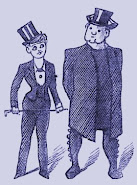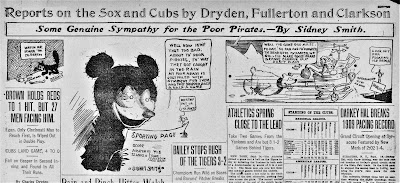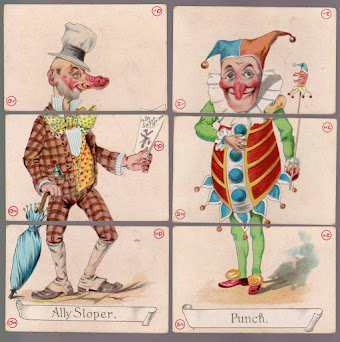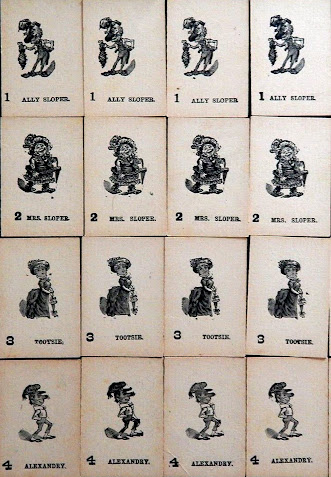by John Adcock
♠
Masthead: The Penny Satirist No 1, April 22, 1837
‘I wish we had an agent in Dundee; he might sell five or six hundred (Penny Satirist) in a week. We have fellows who clear 10s. a day by selling them in the street, but the brutes go idle the rest of the week.’ — James Elishama “Shepherd” Smith, 1801-1857
The Penny Satirist, which called itself “a weekly satirical newspaper” featured the first sustained use of front-page political cartoons in London. The first number of the Penny Satirist arrived in the streets of London on April 22, 1837. That title came to an end on April 25, 1843, and the paper was continued as the London Pioneer. Benjamin Cousins was the printer.
William Rayner writing in Notes & Queries,
June 15, 1872, identified the editor as Barnard Gregory, notorious proprietor of the blackmailing periodical The Satirist. He
was mistaken. The founder and editor of the Penny Satirist was James
Elishama Smith (1801-1857), known as “Shepherd” Smith after his periodical the Shepherd.
For many years he was editor of the popular Family Herald story
paper. Mr. Newton Crosland wrote, presumably to W.A. Smith on 17th April 17,
1892: —
‘I cannot tell you much about the Penny
Satirist, and I do not imagine that the authorities would find room in the
museum for such a publication. Of course, fifty-four years ago a penny paper
was a much rougher article than what we should expect to get for the same money
nowadays. The Penny Satirist was one sheet (4 pages), the size of an
ordinary newspaper; but it was not a newspaper in the ordinary acceptation of
the term, as it was exempt from the newspaper stamp, and it did not live on
advertisements. The type was worn, the paper common, the woodcuts coarse, and
its whole appearance vulgar and disreputable from an artistic point of view;
but under Mr. Smith's superintendence nothing was allowed to appear in its
columns of a demoralizing character. He managed to make its contents
respectable.’ — “Shepherd” Smith the Universalist
[p.168]
And on November 3, 1837, a letter
from James E. Smith to his elder brother John —
‘The Penny Satirist has been above 40,000 a
week, but several scamps have tried to put us down—some by stealing our name,
and others by a rival publication and underselling. We have been obliged to
lower our prices to put the latter down, otherwise it would be a fine property.
It has a fine circulation and is read by all classes.
I was told by a gentleman, who is intimate with
some of the foreign embassies, that in dining at Buckingham Palace this
ambassador said he saw the Countess of Leiningen, the Queen's sister-in-law, with
the Penny Satirist in her hand. This same gentleman sends regularly a copy to
the Duchess of Somerset, and this morning the gentleman who machines the paper
—a large printer in London, who is worth considerable property —told me that,
in calling on a barrister of good practice in town, he saw the Penny
Satirist, with other papers, lying on his drawing-room table. The
circulation of the paper, therefore, is not confined to the poor, although they
are our best patrons. We have every reason to believe that the Queen herself
has frequently read it.’ — “Shepherd” Smith the Universalist [p.168]
The Penny Satirist was not the first periodical
resembling a newspaper to make use of comic woodcuts. The earliest publications
containing comic cuts I have found listed was The Original Comic Magazine:
No. 1, With Seven Cuts which cost 6d and was published by another radical
pressman, J. Duncombe in 1832. The famous penny blood publisher Edward Lloyd
published a penny paper called The Weekly Penny Comic Magazine; or,
Repertory of Wit and Humour, edited by Thomas Prest and featuring the cuts
of the prolific C. J. Grant, also in 1832. Unfortunately, I have never
personally examined either of these publications, they exist today only as
advertisements in the Poor Man’s Guardian and other radical newspapers.
The Satirist; or, Censor of The Times (HERE) ran from
10 April, 1831 to 15 December 1849. Barnard Gregory and Hewson Clarke were the
main contributors. Robert Cruikshank, brother of George Cruikshank and engraver
G. Armstrong contributed a political cartoon series called ‘Our Portrait
Gallery’ beginning January 4, 1835, which continued for approximately one year.
Gregory was the registered proprietor, printer and publisher at no. 334,
strand, Middlesex.
‘Our Portrait Gallery’ were comic cuts with long rhyming text
under the engravings, following the form of the early comicalities in Bell’s Life in London. The Penny Satirist was different, they placed conversational
captions under the cuts. They anticipated the cartoon “socials” of Punch,
Judy, and similar comic journals of a later time. The style was carried on by the Odd
Fellow (HERE), a weekly
satirical newspaper which lasted from Jan 5, 1839, to Dec 10, 1842. The Odd
Fellow publisher was Henry Hetherington, a radical pressman famous for
his Poor Man’s Guardian.
Cleave’s London Satirist & Gazette of Variety began on
Oct 14, 1837, changed to Cleave’s Penny Gazette of Variety then Cleave’s
Gazette of Variety ending Jan 1844. The proprietor of the unstamped paper
was John Cleave, wholesale bookseller and newsagent situated in Shoe Lane. Patricia
Hollis in The Pauper Press (1970) wrote that at “the beginning of 1836 Cleave’s
Gazette was thought to have a circulation of 40,000.”
The leading caricaturist, and possibly the inventor of the
caption style that replaced rhymes, was Charles Jameson Grant. Mathew Crowther
wrote on Yesterday’s Papers on Feb 28, 2011 (HERE), that
‘From 1837 onwards most of Grant’s output was
confined to the pages of the Penny Satirist and Cleave’s London
Satirist & Gazette of Variety. Interestingly Grant and Cleave also
launched a separate, short-lived, broadsheet called Cleave’s Gallery of
Grant's Comicalities which doesn't seem to have run to more than a few
editions in 1837 and which focused on whimsical social humour rather than politics.
CJG was the most conspicuous signature to appear on cartoons
in both the Penny Satirist and Cleave’s. Indeed, very few other
names appear on the cuts except for Hine. It seems very
likely, given his prolific contributions to the unstamped penny press that CJ
Grant was the innovator of the caption style commentary running under comic cuts in the radical London Press which would carry on well into the
twentieth century in London and the United States. Even Hearst’s Journal
comic supplements featured caption comics on Sunday amid the works utilizing
balloons or dumb show. It could also very well be that captions were imported from continental Europe and its newspaper and periodical equivalent to the penny press.
The captions in the Penny Satirist at first could run
to long length and it was the unknown caricaturists of the Odd Fellow
who shortened the form to bite-sized portions of text, more often “social” than
political humor, rather like the gag cartoons and single-panel dailies of the
twentieth century. It was the style of the Odd Fellow cuts that would
prove most adaptable to the pages of the comic journals (including Punch) and newspapers of the
unforeseeable future.







































